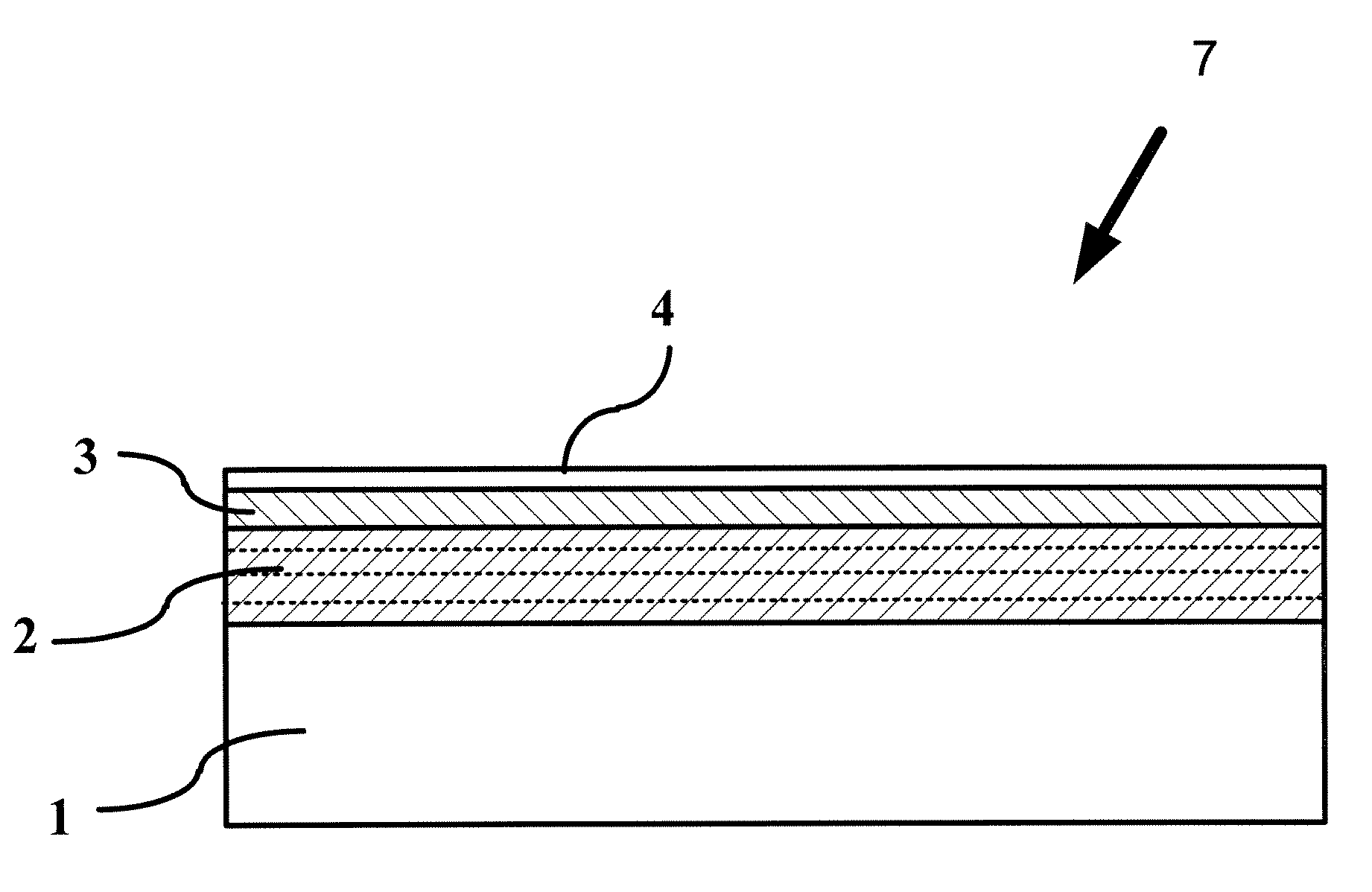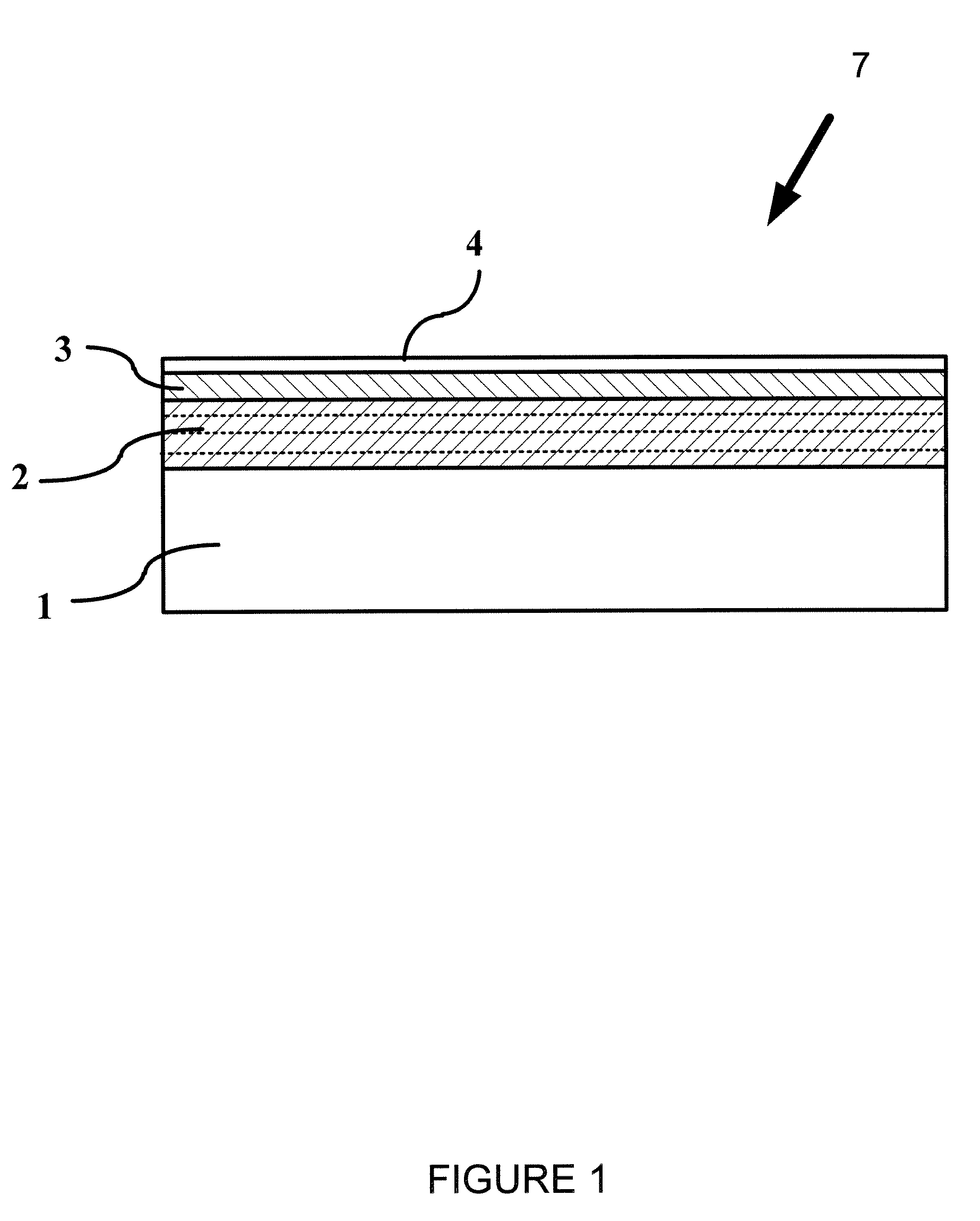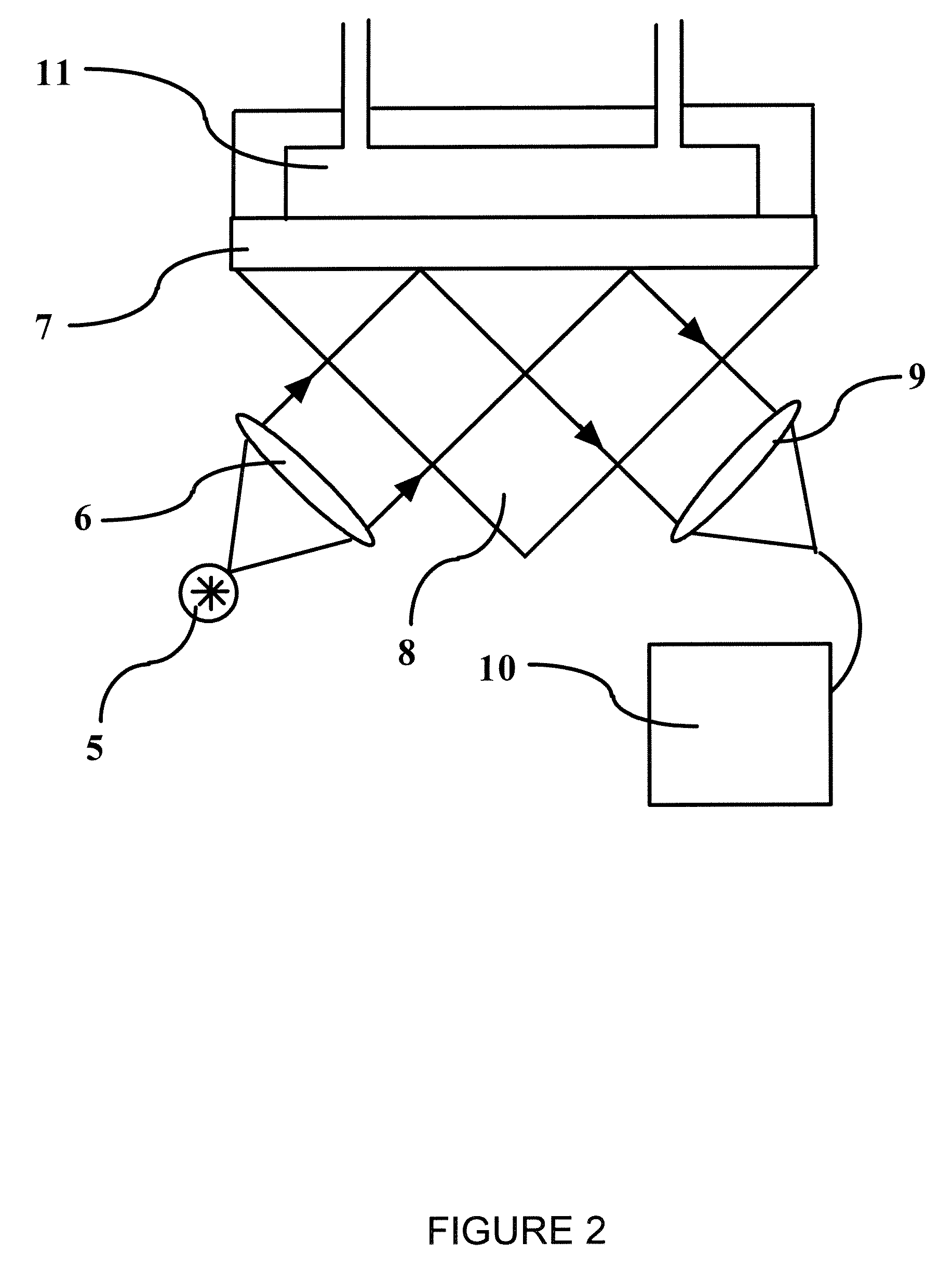Optical sensor based on surface electromagnetic wave resonance in photonic band gap materials and method for using same
a technology of photonic band gap material and optical sensor, applied in the field of optical sensor configuration, can solve the problems of gold having a less well-defined resonance than silver, limited application range, and gold being suitable for most applications
- Summary
- Abstract
- Description
- Claims
- Application Information
AI Technical Summary
Problems solved by technology
Method used
Image
Examples
Embodiment Construction
[0022]Surface electromagnetic (EM) waves are electromagnetic modes that propagate at the interface between a passive dielectric material and a so-called active medium (i.e., one whose real part of the dielectric function is less than −1 at the frequency of interest). The dispersion of surface EM waves is such that they are non-radiative, which means that they do not couple directly to light. Excitation of surface EM modes requires the use of a prism or a grating configuration in order to phase match incident light to the surface mode and facilitate resonant coupling between light and the surface EM modes.
[0023]The most widely studied type of surface electromagnetic waves are those that exist at the surfaces of metals. These modes are known as surface plasmons. A number of metals exhibit a sufficiently negative real part of the dielectric function so as to support surface plasmons; however, most metals also have strong dielectric loss (i.e., the large imaginary part of the dielectric...
PUM
 Login to View More
Login to View More Abstract
Description
Claims
Application Information
 Login to View More
Login to View More - R&D
- Intellectual Property
- Life Sciences
- Materials
- Tech Scout
- Unparalleled Data Quality
- Higher Quality Content
- 60% Fewer Hallucinations
Browse by: Latest US Patents, China's latest patents, Technical Efficacy Thesaurus, Application Domain, Technology Topic, Popular Technical Reports.
© 2025 PatSnap. All rights reserved.Legal|Privacy policy|Modern Slavery Act Transparency Statement|Sitemap|About US| Contact US: help@patsnap.com



